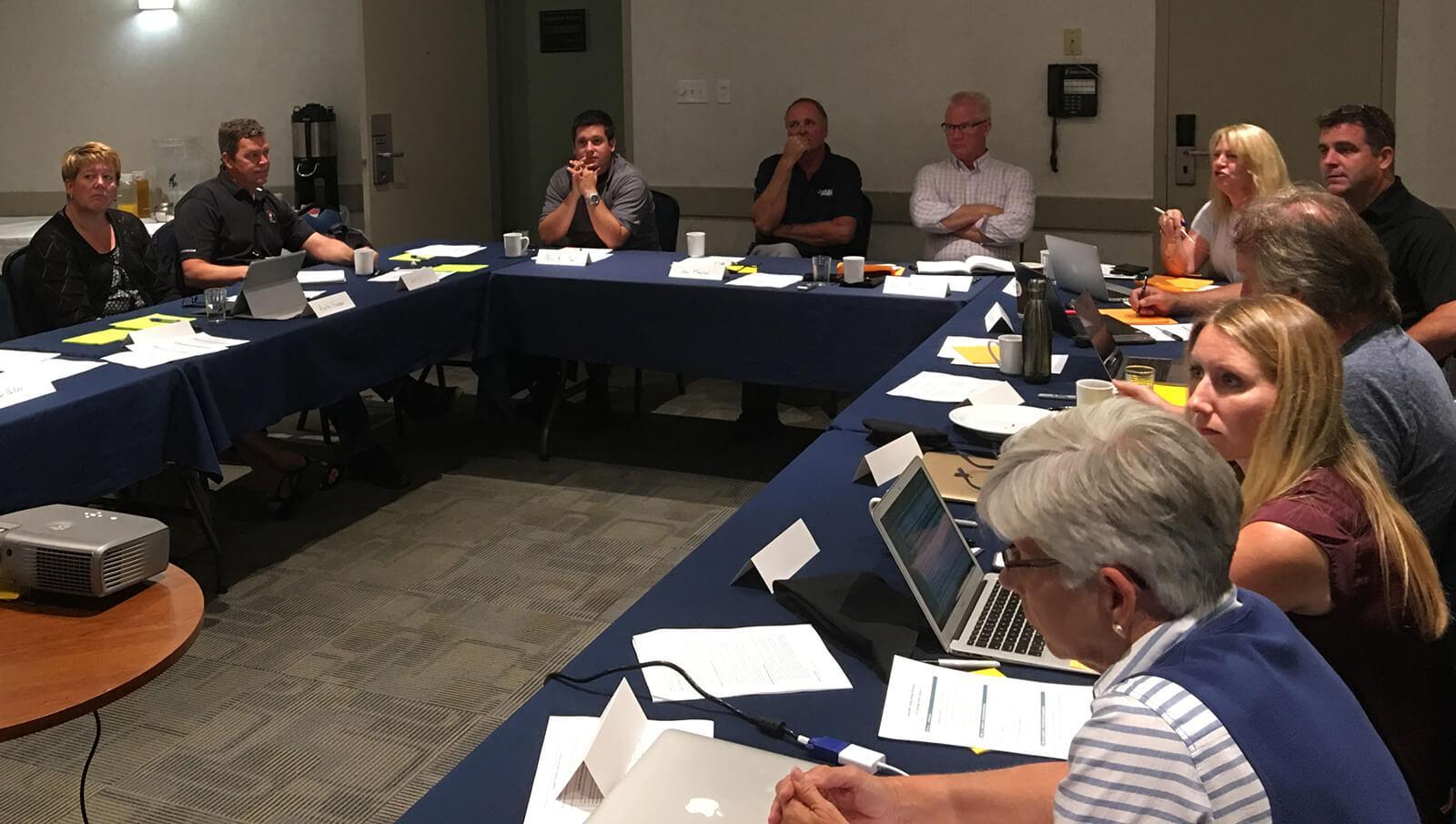November 15, 2017

A workshop held this past June looked at ways to provide sustainable funding to the nursery/landscape sector.
Industry leaders convene to determine research funding strategies
Working cooperatively, Landscape Ontario (LO) and the Canadian Nursery Landscape Association (CNLA) held a one-day facilitated workshop, designed to brainstorm creative solutions for providing the nursery/landscape sector with sustainable funding solutions.
An important first step in addressing this critical need, the workshop engaged industry leaders from across Ontario and Canada to focus on the single objective of determining creative research funding strategies which would drive innovation and development of the sector across Ontario and Canada.
Like most agricultural and horticultural commodity groups, Canada’s wholesale nursery grower sector is acutely aware of the need for ongoing research to ensure the prosperity of the sector in today’s increasingly challenging business environment. As evidenced by the results of recent priority-setting workshops, the sectors research needs are diverse and seek outcomes resulting in improved production technologies, business profitability and marketplace enhancement.
According to Landscape Ontario Growers’ Group chair John Mantel, “Ongoing production improvements have long been a part of our sector’s traditional research priorities, but increasingly we see that our priorities are being driven by the need for enhanced environmental sustainability.” The list includes, among other things, environmental best practices such as the optimization of nutrient delivery, efficiency of water management and decreased energy use.
Very new and as of yet largely unfulfilled business opportunities have also presented themselves to the nursery/landscape sector as a result of the new green infrastructure economy. These too, have generated the need for research that leads to expanded application of ornamental products for climate change mitigation and environmental enhancement.
As these new opportunities and challenges have motivated the sector’s appetite for increased research, the need for sustainable funding to support these ongoing requirements has become increasingly evident. As noted by Vic Krahn, chair of the Canadian Nursery Landscape Association’s Research Committee, “We have been particularly fortunate that our respective provincial and national trade organizations have been able to meet the financial commitments of our research initiatives to date. However, we must also recognize the need for more reliable and sustainable funding sources if we are to move forward with our new and expanded research priorities.”
The workshop engaged industry leaders from across Ontario and Canada to focus on the single objective of determining creative research funding strategies which would drive innovation and development of the sector across Ontario and Canada.
Using criteria that included flexibility, simplicity, security, integrity and above all, sustainability, the workshop participants developed a list of options to present to the Board for further discussion and consideration. At the conclusion of the workshop, Krahn noted, “Above all, our board understands the importance of ownership. The ultimate decision of the board, based on the recommendations that will be presented to them as a result of the workshop will be based on a plan that all our members can own as ‘their’ plan for the betterment of ‘their’ industry.”
This project was funded in part through Growing Forward 2 (GF2), a federal-provincial-territorial initiative. The Agricultural Adaptation Council (AAC) assists in the delivery of GF2 in Ontario.
An important first step in addressing this critical need, the workshop engaged industry leaders from across Ontario and Canada to focus on the single objective of determining creative research funding strategies which would drive innovation and development of the sector across Ontario and Canada.
Like most agricultural and horticultural commodity groups, Canada’s wholesale nursery grower sector is acutely aware of the need for ongoing research to ensure the prosperity of the sector in today’s increasingly challenging business environment. As evidenced by the results of recent priority-setting workshops, the sectors research needs are diverse and seek outcomes resulting in improved production technologies, business profitability and marketplace enhancement.
According to Landscape Ontario Growers’ Group chair John Mantel, “Ongoing production improvements have long been a part of our sector’s traditional research priorities, but increasingly we see that our priorities are being driven by the need for enhanced environmental sustainability.” The list includes, among other things, environmental best practices such as the optimization of nutrient delivery, efficiency of water management and decreased energy use.
Very new and as of yet largely unfulfilled business opportunities have also presented themselves to the nursery/landscape sector as a result of the new green infrastructure economy. These too, have generated the need for research that leads to expanded application of ornamental products for climate change mitigation and environmental enhancement.
As these new opportunities and challenges have motivated the sector’s appetite for increased research, the need for sustainable funding to support these ongoing requirements has become increasingly evident. As noted by Vic Krahn, chair of the Canadian Nursery Landscape Association’s Research Committee, “We have been particularly fortunate that our respective provincial and national trade organizations have been able to meet the financial commitments of our research initiatives to date. However, we must also recognize the need for more reliable and sustainable funding sources if we are to move forward with our new and expanded research priorities.”
The workshop engaged industry leaders from across Ontario and Canada to focus on the single objective of determining creative research funding strategies which would drive innovation and development of the sector across Ontario and Canada.
Using criteria that included flexibility, simplicity, security, integrity and above all, sustainability, the workshop participants developed a list of options to present to the Board for further discussion and consideration. At the conclusion of the workshop, Krahn noted, “Above all, our board understands the importance of ownership. The ultimate decision of the board, based on the recommendations that will be presented to them as a result of the workshop will be based on a plan that all our members can own as ‘their’ plan for the betterment of ‘their’ industry.”
This project was funded in part through Growing Forward 2 (GF2), a federal-provincial-territorial initiative. The Agricultural Adaptation Council (AAC) assists in the delivery of GF2 in Ontario.